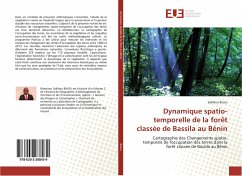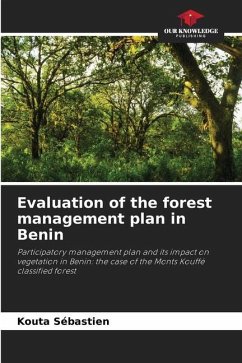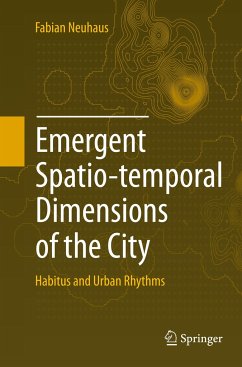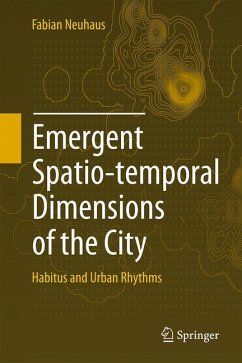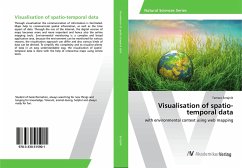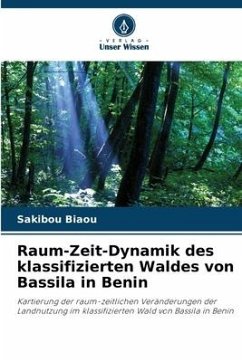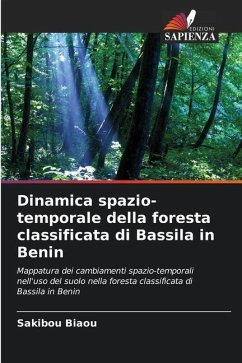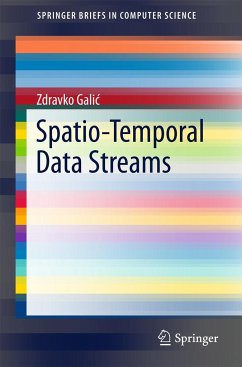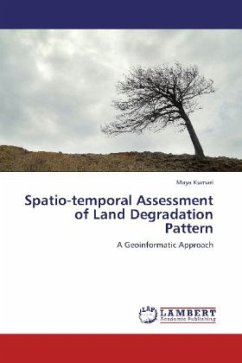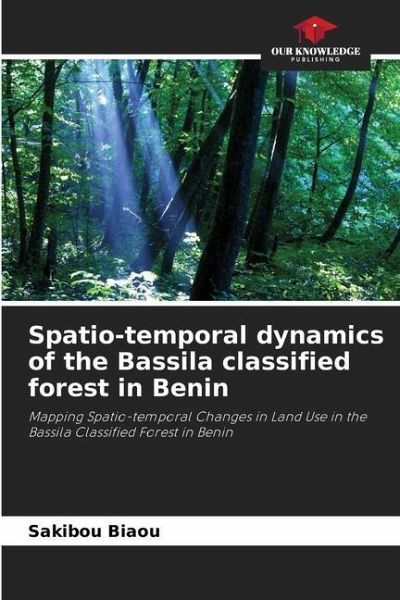
Spatio-temporal dynamics of the Bassila classified forest in Benin
Mapping Spatio-temporal Changes in Land Use in the Bassila Classified Forest in Benin
Versandkostenfrei!
Versandfertig in 6-10 Tagen
43,99 €
inkl. MwSt.

PAYBACK Punkte
22 °P sammeln!
In a context of increasing anthropogenic pressures, the study of vegetation is a major imperative for the preservation and sustainable management of natural resources. The objective of the present research is to evaluate the spatio-temporal changes in land use over the last three decades. Remote sensing, land use mapping, vegetation inventories and socio-economic surveys were the methodological tools used. The Pontius program was used to measure the intensities and rates of change of land use units between 1986 and 2013. The results show the extension of anthropized spaces at the expense of na...
In a context of increasing anthropogenic pressures, the study of vegetation is a major imperative for the preservation and sustainable management of natural resources. The objective of the present research is to evaluate the spatio-temporal changes in land use over the last three decades. Remote sensing, land use mapping, vegetation inventories and socio-economic surveys were the methodological tools used. The Pontius program was used to measure the intensities and rates of change of land use units between 1986 and 2013. The results show the extension of anthropized spaces at the expense of natural formations. The floristic inventory yielded 329 species from the 110 plots installed. Agriculture, logging, livestock and carbonization are the main factors determining the dynamics of the vegetation. It appears that this forest constitutes not only botanical reservoirs in the same way as the protected areas of the State, but also real means of communication, protection and preservation of ecosystems.



